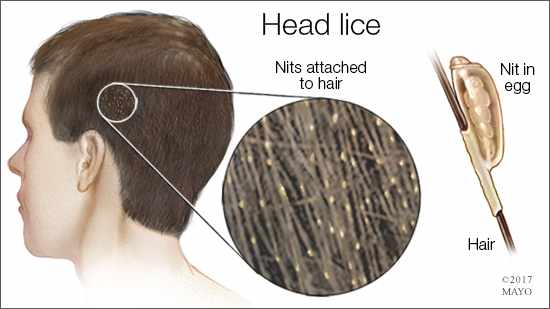-
Featured News
Mayo Clinic Q and A: Getting rid of head lice
 DEAR MAYO CLINIC: Are some types of lice resistant to over-the-counter treatments? Is there a prescription medicine that eliminates head lice?
DEAR MAYO CLINIC: Are some types of lice resistant to over-the-counter treatments? Is there a prescription medicine that eliminates head lice?
ANSWER: Over-the-counter treatments for head lice often are effective, but they don’t work in all cases. Some strains of lice can be resistant to over-the-counter treatments. If head lice persist despite treatment at home, contact your health care provider to discuss prescription medication alternatives.
Head lice are tiny, wingless, parasitic insects that live and feed on blood from a person’s scalp. Head lice cause a lot of fear and anxiety. Fortunately, although they are a nuisance, head lice don’t carry any transmissible diseases that are dangerous.
Unfortunately, head lice can spread easily. They may go from one person to another through direct contact, or they may be passed through shared items, such as combs, brushes and towels. Head lice tend to stay within about one inch of the scalp, anchoring onto a hair shaft. If you suspect that you or a family member has head lice, first look behind the ears and along the back of the neck, near the scalp. Lice are small — about the size of a strawberry seed. Their eggs, or nits, resemble tiny pussy willow buds. Nits can be mistaken for dandruff, but, unlike dandruff, nits can’t be brushed out of hair easily.
Because head lice move rapidly through groups that have close contact, schoolchildren often are affected. Prompt treatment is important to minimize spread within these groups. There are a variety of over-the-counter treatments for head lice. The most common are shampoos containing medications such as pyrethrin or permethrin to kill lice.
To catch the full life cycle of head lice, treat more than once. Treating only once will not affect head lice still in eggs. For best effect, repeat treatment seven or eight days after the first application.
Some lice strains, however, have become resistant to these medications. If over-the-counter treatments don’t work, consider prescription treatments.
Malathion is a prescription medication for head lice that you apply to the hair and rub into the hair and scalp. Another prescription treatment for head lice is benzyl alcohol lotion. You apply it to the scalp and hair for 10 minutes and then rinse it off. Seven days later, you repeat the treatment. This medication is not recommended for children younger than 6 months.
Sometimes, the prescription shampoo lindane is prescribed for head lice. However, due to increasing resistance of lice to this medication and the possibility of serious side effects, lindane typically is used only when other measures fail.
If you don’t want to use medications that kill head lice, try using a fine-toothed comb or nit comb to physically remove lice from wet hair. For this method to be effective, however, it must be repeated every three to four days for at least two weeks. It can be difficult to remove all lice and nits this way.
Home remedies often include attempting to suffocate head lice by applying products such as mayonnaise or petroleum jelly to the scalp. This approach is rarely effective. Some people try to kill head lice with heat, using an extra-hot hair dryer. Putting kerosene on the hair also is used sometimes in an attempt to kill lice. These techniques can lead to severe burns. Do not use them.
If nonprescription treatment hasn’t eliminated head lice, talk to your health care provider. Prescription treatments often can eliminate the problem effectively. — Dr. Dawn Davis, Dermatology, Mayo Clinic, Rochester, Minnesota







